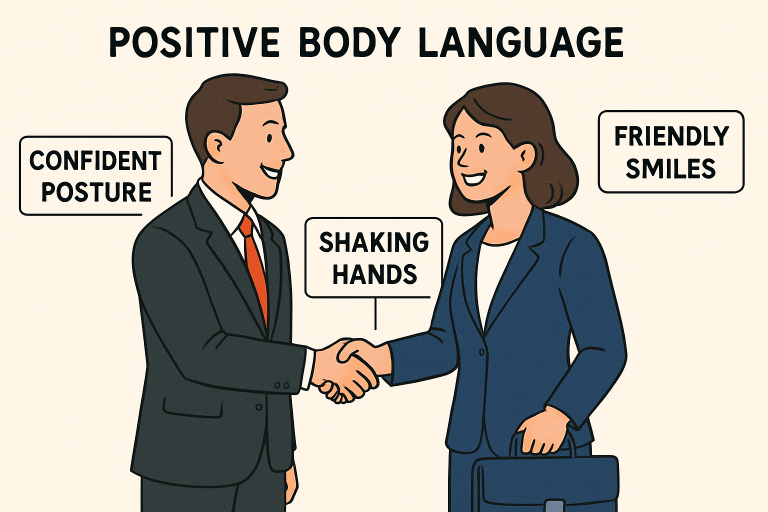Key Takeaways
- First impressions are formed within seconds and significantly influence client relationships.
- Preparation, appearance, and body language are essential to a positive first impression.
- Effective communication and active listening build trust and rapport with clients.
- Continuous improvement and adaptability are vital for sustained success in sales.
Table of Contents
- Introduction
- The Importance of First Impressions
- Preparation Is Key
- Appearance and Body Language
- Effective Communication
- Active Listening
- Building Trust and Rapport
- Continuous Improvement
- Conclusion
Introduction
Whether entering a room, joining a video call, or sending an introductory email, sales professionals are judged almost instantly. Within moments, prospects start forming opinions that can determine whether doors open for collaboration or quietly close. Learning the importance of first impressions in sales is essential for anyone looking to build trust and close deals consistently in this competitive landscape.
Research from Princeton University shows people judge competence, likability, and trustworthiness in less than a second. Those fleeting early seconds can give sales professionals an enormous advantage—or, if handled poorly, a lasting disadvantage. That’s why mastering first impressions isn’t just a helpful skill; it’s necessary in any industry that depends on strong client relationships.
The Importance of First Impressions
In sales, the first impression establishes a framework for how prospects evaluate a representative, their product, and their company’s credibility. Harvard research indicates that people’s first judgments are so resilient that they often persist, even when presented with new contradictory evidence. A strong initial encounter gives sales professionals a platform to present solutions without constantly fighting skepticism or negative assumptions.
Preparation Is Key
Salespeople who consistently impress are also those who meticulously prepare. This involves researching a prospect’s company, reviewing their industry’s trends and challenges, and arriving ready with relevant, personalized insights. Preparation signals respect and highlights a genuine interest in helping—a trait most buyers crave during decision-making. According to Forbes, thoughtful preparation allows sales representatives to craft tailored conversations that resonate with their audience from the outset.
Appearance and Body Language
Nonverbal communication often speaks louder than words. A professional appearance appropriate to the context projects competence and reliability. Beyond clothes, body language like eye contact, upright posture, and a confident handshake establishes approachability and authority without saying a word.

Silent Signals That Matter
Smiling, nodding, and a firm but friendly tone can dramatically shift a prospect’s perception. Subtle cues—such as mirroring the client’s body language—show attentiveness and help put others at ease, making them more receptive to your pitch.
Effective Communication
Top-performing sales professionals don’t just know their product—they’re adept at expressing its value clearly and concisely. Minimizing jargon and using simple, relatable language fosters understanding. It’s not just about what you say but how you say it: enthusiasm and authenticity are contagious, helping to spark interest and maintain engagement.
As the Harvard Business Review highlights, purposeful storytelling and meaningful anecdotes help make solutions memorable and relevant, bridging your offering and the client’s needs.
Active Listening
Memorable first impressions aren’t shaped by talking alone but by listening. Active listening means focusing on the speaker, acknowledging their perspective, and asking clarifying questions. This demonstrates sincere interest, conveys professionalism, and encourages prospects to share crucial details about their challenges and goals.
Listening for Opportunity
When clients feel heard, they’re more willing to collaborate. In sales, asking follow-up questions and summarizing what you’ve listened to keeps the conversation on track, minimizes misunderstandings, and clears a path for tailored recommendations.
Building Trust and Rapport
Developing rapport starts with authenticity. Sharing relevant industry insights, personal anecdotes, or experiences fosters connection and helps prospects feel understood. Consistent communication—backed by honesty and reliability—further cements trust over time. According to Psychology Today, trust is built through honest disclosure, keeping promises, and demonstrating empathy, all of which are essential traits in sales interactions.
Empathy Drives Relationships
Understanding a client’s unique challenges and responding with genuine empathy sets the stage for long-term partnerships. Even when initial meetings don’t result in immediate sales, the rapport built can lead to referrals and future opportunities.
Continuous Improvement
Even the best sales professionals encounter setbacks and objections. The most successful leverage internal and external feedback to reflect on what worked and where improvements can be made. Attending workshops, reading relevant literature, and staying abreast of industry changes ensures ongoing professional growth and adaptability. Cultivating this mindset allows for continual refinement and consistently impactful first impressions.
Conclusion
Cementing a memorable first impression is both an art and a science. With careful preparation, mastery of non-verbal cues, clear communication, and genuine interest in client needs, sales professionals can set themselves apart and foster enduring success. The small, deliberate actions in those crucial early moments build a foundation for long-lasting, trust-based client relationships.

